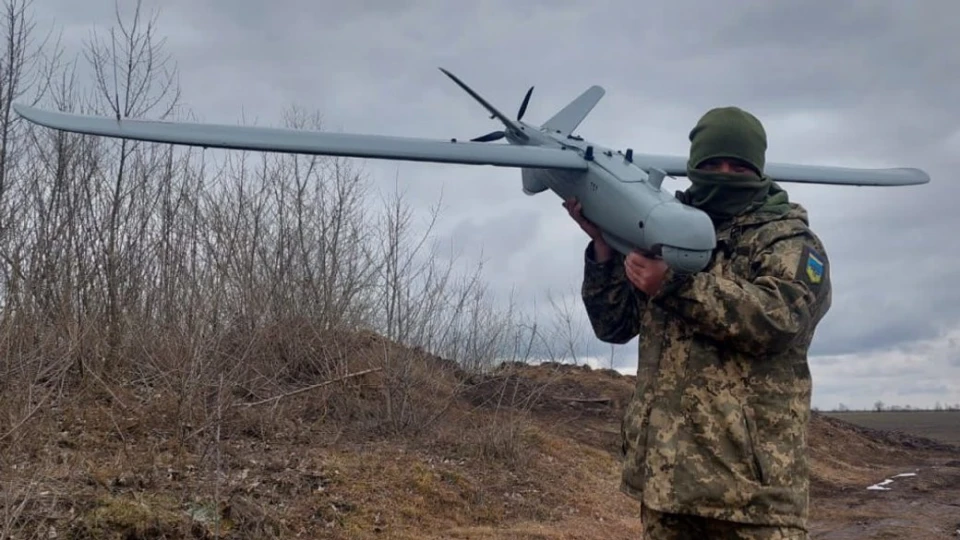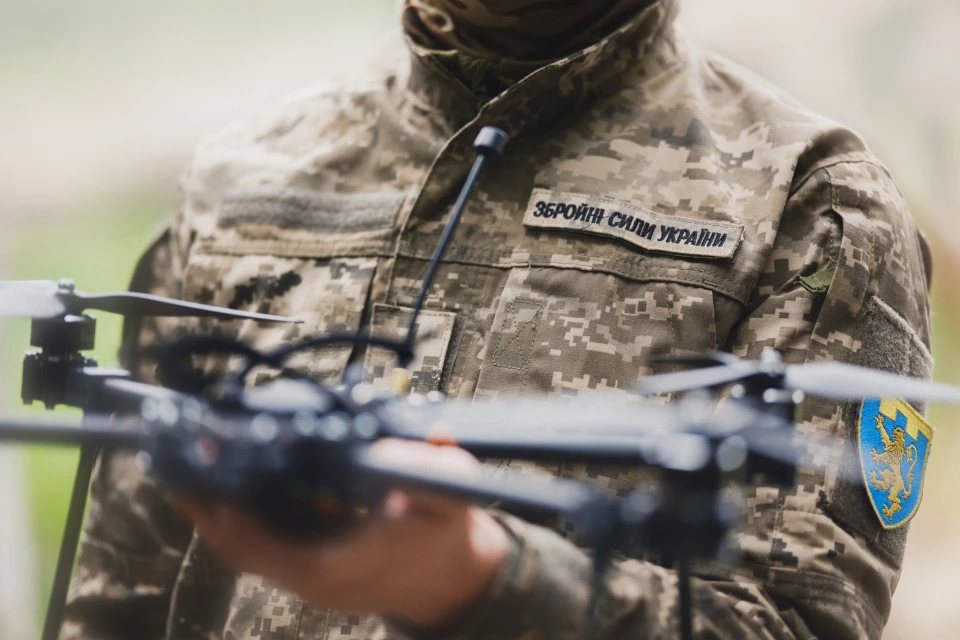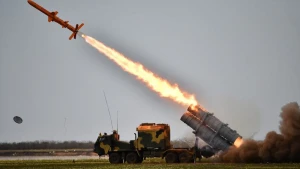
Frontline UAVs: Will Ukraine have enough drones for its army next year?
During his final press conference of the year, President of Ukraine Volodymyr Zelenskyy said that a million drones will be produced next year, while building drone control infrastructure
Espreso provides an explanation of drone production in Ukraine and what opportunities there are to provide Ukrainian drones to the military at the front.
The text covers the following topics:
- How many types of drones are in service with the Ukrainian army
- What kind of drones are operating at the front
- What are the capacities of Ukrainian UAV manufacturers
- What are the opportunities in Ukraine to produce ammunition for drones
During Russia's full-scale war against Ukraine, drones have become one of the most important elements of the battlefield. The “warbirds” are used to reconnoiter Russian territory and hit important targets in Russian troops’ rear. The military and experts say that the war is a technological war, and it is necessary to develop the field of unmanned aerial vehicles. Therefore, UAV manufacturers have significantly developed their production, and engineers have started looking for new technological solutions and improving products.
Currently, a variety of drones are actively engaged in combat operations on the front lines. According to Ukraine’s Ministry of Defense, the Ukrainian army currently has 89 models of unmanned aerial systems in service. FPVs operate at a distance of up to 10 kilometers, reconnaissance and correction UAVs fly up to 200 kilometers, and strike drones fly up to 700 kilometers. Each of these types of drones is produced in Ukraine.
Reconnaissance drones
According to Serhiy Zgurets, Defense Express CEO and military expert, there are presently 50 companies in Ukraine involved in the production of reconnaissance drones. However, the companies established before the onset of the full-scale war are primarily supplying the brigades, with at least 10 such experienced and professional entities witnessing a substantial increase in orders. On the other hand, newer companies that have only recently entered the market for reconnaissance UAVs may lack the necessary experience to secure government orders at this time.
DeVIRo, an established player in the market with a decade of experience, is a significant producer of reconnaissance drones. They are known for manufacturing the Leleka 100, a UAV designed for deep reconnaissance into enemy territory and fire control.
"The Leleka flies high and sees far. These are the most modern eyes of the gods of war - artillery. Our ‘birds’ find the enemy, guide the artillery and confirm hits," the manufacturers say about their invention.
During the full-scale invasion, the company has been using all of its capacities, but is ready to develop and fulfill long-term production plans if necessary. Currently, drones are not manufactured in Ukraine. For safety reasons, new types of UAVs are being created at a Czech plant. Only maintenance and a pilot school are kept in Ukraine.

Photo: 128th separate mountain assault brigade of Zakarpattia. Leleka-100 drone
The company emphasizes pilot training. They are convinced that the outcome on the battlefield depends on the professionalism of the people. "Protection from enemy electronic warfare depends on the operator. And only experienced instructors can teach the military how to operate a UAV. We have such capabilities, our training center is certified by the State Aviation Administration and we conduct training in conditions as close to combat as possible," the press service says.
Currently, the company's engineers are working to find new technological solutions. Although specific details about these new products are not disclosed, the company promises that Russian forces will experience their impact on the front lines.
FPV drones
FPV (First Person View) drones equipped to drop explosives have proven to be a noteworthy development in this war. Despite their relatively low cost, these drones can effectively target and damage equipment worth millions of dollars. Ukraine’s Minister of Strategic Industries Oleksandr Kamyshin mentioned that Ukrainian companies produced more than 50,000 FPV drones in December alone. However, the question remains whether this quantity is sufficient for the needs of the army.
Experts say no. According to Serhiy Zgurets, the average need of one brigade is about 1,000 FPV “birds” per month. Therefore, there is a need to increase production to at least twice the current capacity. A production output of 100,000 FPV drones per month from Ukrainian companies would be considered a positive achievement.
Another problem is production. In Ukraine, FPV drones are manufactured by volunteer foundations and private companies. It imports components mostly from abroad. The country buy engines, propellers, controllers, and frame parts.
For example, FPV drones are manufactured by the April workshop of volunteer Yuriy Tanasiichuk. He has been helping the military at the front since the beginning of the full-scale invasion. When he saw a shortage of drones, he came up with the idea of manufacturing them himself. In a short time, he managed to set up the production process.
"I had an idea to make a ‘bird’ that could catch up with a Shahed and hit it. But this is a more complicated production, so we started with FPVs," says Yuriy Tanasiichuk.
The production time for one drone is a little over two hours, but having all the necessary components is crucial. Most components, such as engines and controllers, are ordered from China or the EU. Additionally, some parts are manufactured using a 3D printer.
"First of all, there is a problem with expertise. Many entities have closed down due to competition, but the focus should be on collaboration for a common cause. The goal is to develop advanced drones capable of flying long distances and effectively engaging enemies," emphasizes Yuriy Tanasiichuk.
And more powerful companies are trying to establish production entirely from Ukrainian components. The First Contact company is actively working to produce FPV drones from Ukrainian parts as much as possible. They have been on the market for almost a decade and have managed to launch mass production of UAVs. They have now attracted investors and are investing to launch full production of their motors, propellers, controllers, and frames.
"We are confident that we will reach 70-80% of Ukrainian components in the Osa and Vidsich drones that we will produce next year," says Valeriy Borovyk, Chairman of the Board of the New Energy of Ukraine Alliance, commander of the White Eagle special attack drone unit, and founder of the company. "We have achieved a 70% Ukrainian component in the Osa drone. I believe that in the first quarter of next year, we will achieve independence from China in many aspects, retaining only a few items. These include video chips, for which a significant investment of hundreds of millions of dollars is needed to establish a substantial independent production in Ukraine."
These drones have already shown results at the front. They neutralized Russian infrastructure facilities, points where Russian troops monitored the movements of Ukrainian troops, and allowed them to get close to enemy positions. Production in Ukraine also allows the improvement of the "birds.” While working on the battlefield, the military realized that they needed to look for technological solutions and fight enemy electronic warfare. They are also working on creating a swarm system to deliver more powerful strikes with dozens or hundreds of drones that will be coordinated with each other. They promise to show the first results next year.
Currently, the company produces 150 drones a month but assures that they have the potential to produce up to 1,000 drones a month if they receive a large order.
"For example, Osa is a quadcopter-type drone that flies on missions, hovers over an object, makes a hit, returns, takes additional ammunition, and can fly again to carry out the mission. We can reach higher capacities of this device within two months," added Valeriy Borovyk.
So now Ukraine is scaling up the production of FPV drones, constantly enhancing their capabilities. Notably, the organization Wild Hornets has initiated mass production of FPV drones equipped with night cameras, enabling them to engage targets during nighttime operations. This unique experience, coupled with technical advancements, sets Ukrainian capabilities apart, as no other military in the world possesses a comparable system.
Strike drones
Ukrainian attack drones have been instrumental in launching strikes on the Russian rear. These drones have been utilized to eliminate Russian aircraft, conduct airstrikes on Moscow, and target Russian airfields. Modernized Soviet Strizh drones, modified in Ukraine, have been employed in such operations, boasting an extended range of 700 kilometers. The attacks have also involved Bober UAVs. Additionally, the AQ 400 drones, seemingly constructed from plywood, have made an impact with a range of 700 kilometers and a formidable warhead weighing 30-40 kilograms. Ukrainian forces have extended their drone capabilities to the maritime domain, exemplified by the Sea Baby drone's attack on the Kerch bridge.
According to Serhiy Zgurets, Ukraine has now developed the production of drones for reconnaissance and combat operations. Recently, this area has developed a lot and surpassed the experience of European and American companies that relied on expensive long-range weapons. And Ukraine is in the midst of a technological war of attrition, and the cost of armaments should be economically feasible. And drones can become a cheaper alternative, but with the same effectiveness in destroying enemy targets.
What the Ministry of Defense says about the production and supply of drones
Ukraine’s Ministry of Defense recognizes that there is a lack of drones at the front. And to solve this problem, manufacturers need to increase their capacity. Currently, they mostly cooperate with Ukrainian companies. 80% of the required quantity is purchased in Ukraine. In addition, the Ministry is working to provide ammunition for drones. According to the Ministry of Defense, twenty munitions have been codified so far. The materials of previous tests have been studied and 22 munitions are being tested.
The Ministry of Strategic Industries of Ukraine assured that Ukraine has the capabilities to produce them. According to the head of the ministry, Oleksandr Kamyshyn, there are currently 50 state and private manufacturers who are ready to produce ammunition from 300 grams to 10 kilograms. "Ammunition for drones should be produced in a factory, not in the trenches. And the factories are ready for this," the minister believes.
So the UAV manufacturing industry is developing in Ukraine, and we hope that next year we will see significant successes of Ukrainian-made drones at the frontline.
- News













































